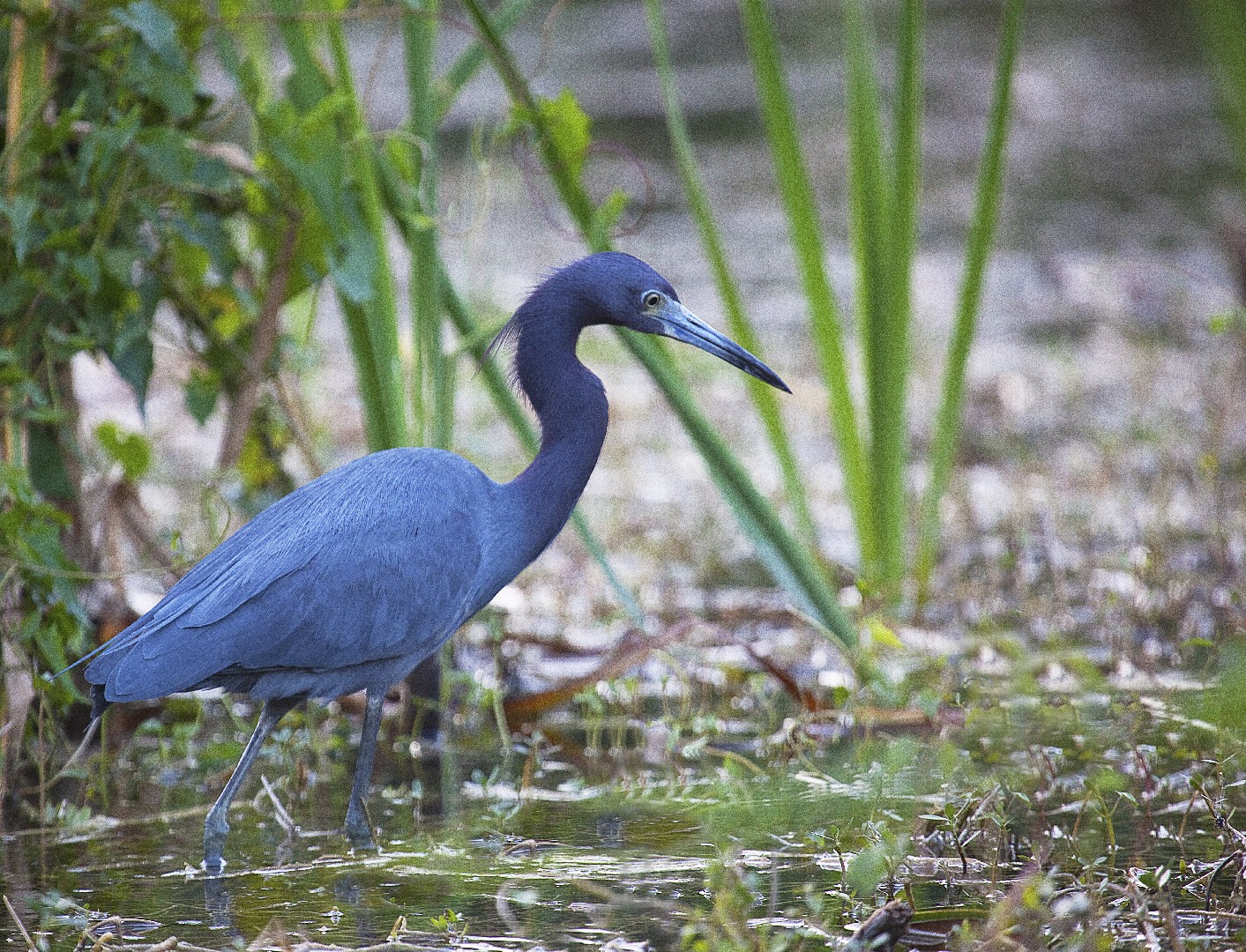Little Blue Heron
A species of Typical Egrets, Also known as Blue Heron Scientific name : Egretta caerulea Genus : Typical Egrets
Little Blue Heron, A species of Typical Egrets
Also known as:
Blue Heron
Botanical name: Egretta caerulea
Genus: Typical Egrets
Content
Description People often ask General Info
 Photo By Emmett.Hume , used under CC-BY-SA-3.0 /Cropped and compressed from original
Photo By Emmett.Hume , used under CC-BY-SA-3.0 /Cropped and compressed from original Description
A fairly small heron, the little Blue Heron is found in wetland habitats. Born with white feathers, a juvenile goes through a dramatic change to an all-dark adult. During the young stage, it looks very similar to the Snowy egret, with whom juveniles often mix during feeding time to get free food. A quiet and calm feeder, this heron is often overlooked; however, it's not easily approachable.
Size
64 - 76 cm
Life Expectancy
14 years
Nest Placement
Tree
Clutch Size
3 - 4 eggs
Number of Broods
22 - 23 days
Nestling Period
35 - 49 days
Feeding Habits
Little Blue Heron primarily consume small fish like anchovies, killifish, and perch. Their diet also includes amphibians, crustaceans like fiddler crabs and shrimp, insects, and occasionally reptiles. They alter their prey choice regionally, employing varied hunting methods to capture these food items.
Habitat
Little Blue Heron predominantly inhabit wetlands including swamps, marshes, and ponds, as well as streams, lagoons, and tidal flats. They favor shrubs and small trees for nesting, preferring areas with standing water or on islands. Little Blue Heron adapt to a range of altitudes and climates, from temperate to tropical regions, often found in water around 2–6 inches deep amid dense vegetation. In winter, they frequent mangroves, lagoons, salt ponds, and mudflats, showcasing their versatility within diverse wetland ecosystems.
Nest Behavior
During nest building, little Blue Heron's male gathers materials which the female uses to build the bulk of the nest over 3–5 days. Following this, little Blue Heron's egg-laying and parental care commence, with both parents involved in nest protection and chick rearing.
Nest Characteristics
Little Blue Heron typically nest in low shrubs and trees, seeking the safety beneath the canopy, with a preference for flooded areas or islands. Their nests are porous platforms, constructed mainly from leafless twigs and sticks, lined with greener vegetation, and measure 1–1.5 feet in diameter.
Dite type
Piscivorous
People often ask
General Info
Feeding Habits
Bird food type
Sounds
Call
Recording location: Suriname
Behavior
The little Blue Heron exhibits distinctive foraging behavior, frequently wading deep into various wetlands with a stiffly-extended neck and downward-tilted bill, employing subtle head movements to track prey. They exhibit sociability, often foraging and nesting in mixed-species colonies, displaying a particular gregariousness during breeding. Aggressive territorial disputes over food and nesting sites are common, marked by bill jabbing among their own kind. In flight, the little Blue Heron maintains a slow, deliberate wingbeat with retracted neck and head. Courtship rituals include bill pointing upwards and neck stretching, as well as branch shaking with feather erection. Nestlings engage in intense competition for food, often leading to siblicide among siblings during scarcity.
Distribution Area
These herons breed in the Gulf states of the US, through Central America and the Caribbean south to Peru and Uruguay It is a resident breeder in most of its range, but some northern breeders migrate to the southeastern US or beyond in winter. There is post-breeding dispersal to well north of the nesting range, as far as the Canada–US border. 
Scientific Classification
Phylum
Chordates Class
Birds Order
Pelicans and Relatives Family
Herons Genus
Typical Egrets Species
Little Blue Heron